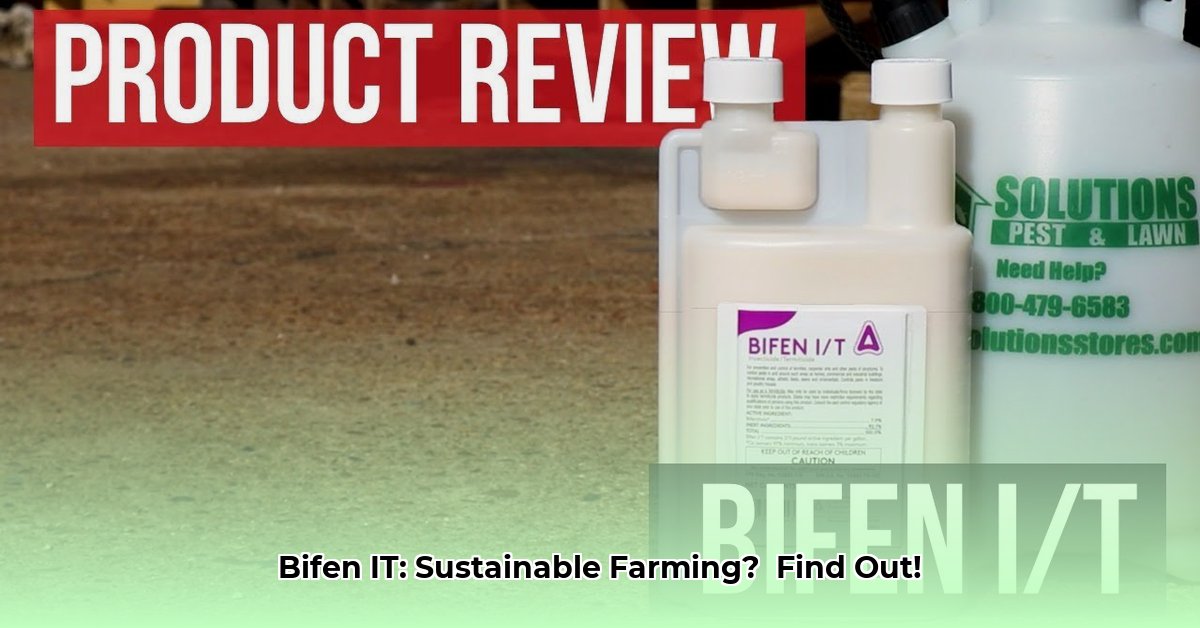
Bifen IT, a product sold at Tractor Supply, contains bifenthrin, a potent insecticide. While effective against various crop pests, its use in sustainable agriculture raises crucial questions regarding environmental impact and human health. For more information on safe pesticide storage, check out this helpful resource on chicken coop safety. This article analyzes the pros and cons of Bifen IT, exploring its efficacy, environmental consequences, and sustainable alternatives.
Bifenthrin: Mechanism of Action and Efficacy
Bifenthrin, a synthetic pyrethroid insecticide, mimics natural plant toxins to disrupt insect nervous systems, leading to paralysis and death. Numerous studies demonstrate its effectiveness against a wide range of pests, including certain beetles, caterpillars, and other common agricultural threats. However, its broad-spectrum activity—affecting both harmful and beneficial insects—is a significant environmental concern.
Environmental Impact: A Comprehensive Assessment
The environmental impact of bifenthrin is multifaceted and requires careful consideration. Its persistence in soil poses a risk of groundwater contamination and harm to aquatic life. Furthermore, its impact on non-target organisms, particularly pollinators like bees and other beneficial insects vital for ecosystem health, is a major concern. Long-term effects on soil biodiversity and overall ecosystem function are still under investigation, highlighting the need for continued research. Studies on bifenthrin's bioaccumulation in various organisms also need further examination.
Human Health Risks: A Cautious Approach
While acute toxicity from direct exposure to bifenthrin is relatively well-documented, causing mainly skin and eye irritation, the potential for chronic health effects from long-term exposure or dietary intake of bifenthrin residues requires further investigation. Regulatory agencies continually monitor residue levels in food to minimize risks, but comprehensive long-term studies remain crucial to fully assess potential carcinogenic or other chronic health impacts.
Sustainability Assessment: Balancing Efficacy and Environmental Costs
Bifenthrin's compatibility with sustainable agricultural practices is debatable. While its effectiveness in pest control is undeniable, its broad-spectrum activity and potential long-term environmental impacts clash with sustainable principles. Integrated Pest Management (IPM), a cornerstone of sustainable agriculture, favors less toxic, targeted pest control methods. Bifenthrin may have a role within IPM, but only as a last resort and with meticulous application to minimize harm to non-target organisms.
Regulatory Landscape: A Dynamic Environment
Regulations governing bifenthrin vary across regions. Farmers must strictly adhere to all local, state, and federal regulations regarding application methods, rates, and safety precautions. These regulations are subject to change, necessitating continuous monitoring and updates on current guidelines.
Sustainable Alternatives: A Multi-faceted Approach
Several sustainable alternatives to Bifenthrin exist. These include:
- Biopesticides: Naturally derived insecticides with reduced environmental impact.
- Crop Rotation: Disrupting pest life cycles through crop diversification.
- Habitat Manipulation: Creating environments less hospitable to pests.
- Biological Control: Utilizing natural predators or pathogens to manage pests.
Often, a combined approach incorporating multiple strategies yields the most effective and environmentally sound results.
Conclusion and Recommendations: Towards Responsible Pesticide Use
Bifenthrin's efficacy is undeniable; however, its potential for environmental damage and long-term health consequences necessitates a cautious approach. Responsible use requires careful consideration of the trade-offs between immediate pest control and long-term environmental and human health impacts. A shift toward sustainable alternatives and the implementation of IPM strategies are crucial for achieving long-term agricultural success and environmental stewardship.
Actionable Recommendations:
- Farmers: Prioritize IPM, explore sustainable alternatives, meticulously follow label instructions, and monitor pesticide effectiveness.
- Agricultural Agencies: Invest in research on alternative pest control methods, educate farmers on IPM, and rigorously monitor pesticide environmental impacts.
- Researchers: Conduct extensive long-term studies on bifenthrin’s impact on non-target organisms and soil health, and develop more sustainable pest control solutions.
- Consumers: Support farmers adopting sustainable practices and demand transparency from food producers regarding pesticide use.